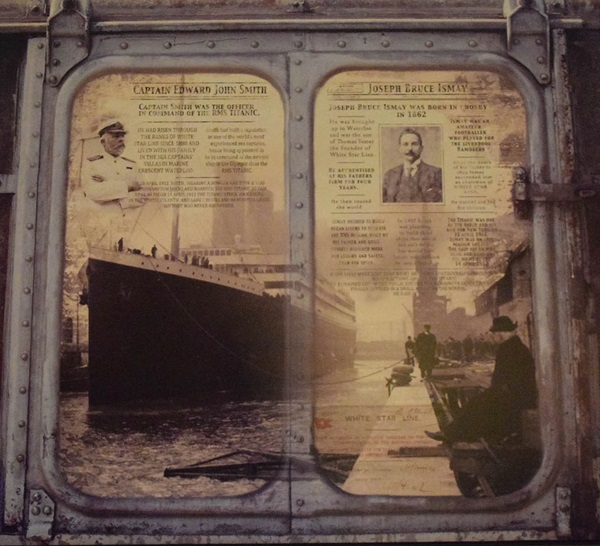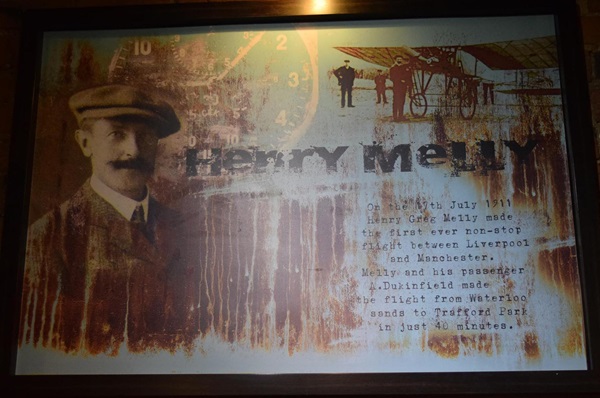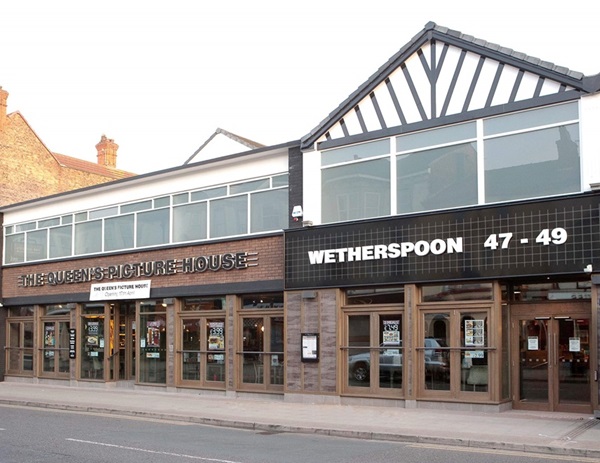47–49 South Road, Waterloo, Liverpool, Merseyside, L22 5PE
Numbers 47-49 South Road are located towards the beach end of the street and have remained empty since 2009. The premises were last occupied by Waterloo Furnishing Stores Ltd, the successor to Pearsons department store which opened in 1960. Until 22 August 1959, the premises had been the Queens cinema. Converted to show ‘talkies’ in 1930, the cinema was purpose built in 1913 as the Queens Picture House, opening its doors on 17 March 1913, with His Western Way, a silent black-and-white film, directed by Romaine Fielding.
Prints and text about Captain Edward John Smith and Joseph Bruce Ismay.

The text reads: Captain Edward John Smith
Captain Smith was the officer in command of the RMS Titanic.
He had risen through the ranks of White Star Line since 1880 and lived with his family in the sea captains’ villas in Marine Crescent in Waterloo.
Smith had built a reputation as one of the world’s most experienced sea captains, hence being appointed to be in command of the newest ship in the Olympic class the RMS Titanic.
On 10 April 1912, Smith, wearing a bowler hat took a taxi to Southampton Docks and boarded the RMS Titanic at 7am. At 11:40pm on 14 April 1912, the Titanic struck an iceberg in the North Atlantic and sank 2 hours and 40 minutes later. His body was never recovered.
Joseph Bruce Ismay
Joseph Bruce Ismay was born in Crosby in 1862. He was brought up in Waterloo and was the son of Thomas Ismay the founder of White Star Line. He apprenticed at his father’s firm for four years. He then toured the world. Ismay was an amateur footballer who played for the Liverpool Ramblers. After the death of his father in 1899 Ismay succeeded him as chairman of White Star Line. He married and had five children.
Ismay decided to build ocean liners to surpass the RMS Oceanic built by his father and built vessels designed more for luxury and safety, than for speed. In 1907 Ismay was planning to build three ships that would not only be fast but would have luxury unparalleled by any other ship. The Titanic was one of the three and set sail for New York on 10 April 1912. Ismay was on this maiden voyage. This ship hit an iceberg and sank on the night on 14 April 1912.
Many lives were lost that night and much controversy surrounded Ismay’s actions aboard the Titanic. He remained out of the public eye for remainder of his life and finally settled in a small house on the Wirral. He died in 1937.
Prints and text about Henry Melly.

The text reads: On the 17 July 1911 Henry Greg Melly made the first ever non-stop flight between Liverpool and Manchester. Melly and his passenger A Dukinfield made the flight from Waterloo sands to Trafford Park in just 40 minutes.
External photograph of the building – main entrance.

If you have information on the history of this pub, then we’d like you to share it with us. Please e-mail all information to: pubhistories@jdwetherspoon.co.uk